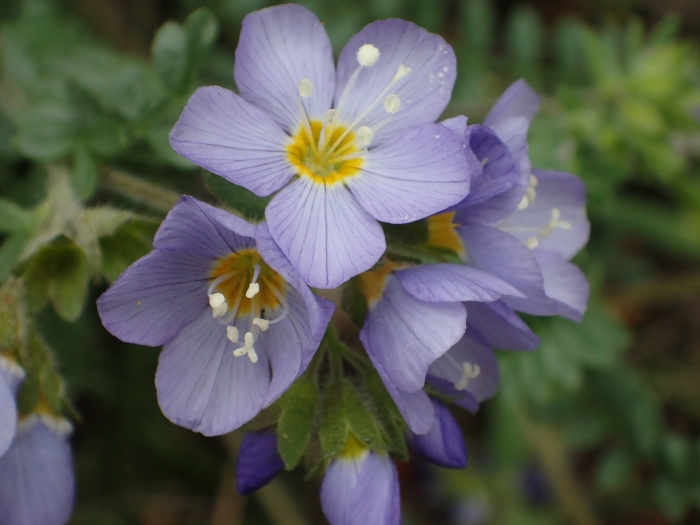Showy Jacob’s-Ladder
(Polemonium pulcherrimum)
Showy Jacob’s-Ladder (Polemonium pulcherrimum)
/
/

Matt Bowser
CC BY 4.0
Image By:
Matt Bowser
Recorded By:
Copyright:
CC BY 4.0
Copyright Notice:
Photo by: Matt Bowser | License Type: CC BY 4.0 | License URL: http://creativecommons.org/licenses/by/4.0/ | Rights Holder: Matt Bowser | Publisher: iNaturalist | Date Created: 2017-06-08T15:14:23-07:00 |















































Estimated Native Range
Summary
Polemonium pulcherrimum, commonly known as Showy Jacob’s-Ladder, is a perennial herb native to alpine and subalpine meadows and moist clearings in mountainous regions of western North America. It typically forms a clump of several erect stems, reaching a maximum height of 30 centimeters. The foliage consists of mostly basal leaves, with smaller ones arranged along the stem, and is lightly hairy, densely glandular, sticky, and strongly scented, with an odor reminiscent of skunk. The plant is noted for its dense, elongated, or headlike clusters of bell-shaped flowers, each just under a centimeter wide, blooming in late spring to early summer. The flowers range from deep to bright or pale blue to nearly white with a yellow throat and are quite showy, attracting pollinators such as bees and butterflies.
Showy Jacob’s-Ladder is valued for its attractive blue flowers and compact growth habit, making it suitable for rock gardens, alpine gardens, and as a border plant in shady areas. It is relatively low-maintenance, requiring medium amounts of water and thriving in soils with medium drainage. While it prefers part shade, it can tolerate a range of light conditions from full sun in cooler climates to dappled sunlight in warmer areas. Gardeners should be aware that it may not tolerate hot, humid environments well and can be susceptible to root rot if overwatered or planted in poorly drained soils. There are no widely recognized cultivars, but the species itself is a charming addition to the garden.CC BY-SA 4.0
Showy Jacob’s-Ladder is valued for its attractive blue flowers and compact growth habit, making it suitable for rock gardens, alpine gardens, and as a border plant in shady areas. It is relatively low-maintenance, requiring medium amounts of water and thriving in soils with medium drainage. While it prefers part shade, it can tolerate a range of light conditions from full sun in cooler climates to dappled sunlight in warmer areas. Gardeners should be aware that it may not tolerate hot, humid environments well and can be susceptible to root rot if overwatered or planted in poorly drained soils. There are no widely recognized cultivars, but the species itself is a charming addition to the garden.CC BY-SA 4.0
Plant Description
- Plant Type: Herb
- Height: 0.8-1 feet
- Width: 1-1.5 feet
- Growth Rate: Moderate
- Flower Color: Blue, Purple
- Flowering Season: Summer
- Leaf Retention: Deciduous
Growth Requirements
- Sun: Part Shade
- Water: Medium
- Drainage: Medium
Common Uses
Bee Garden, Bird Garden, Butterfly Garden, Deer Resistant, Hummingbird Garden, Low Maintenance, Showy Flowers
Natural Habitat
Alpine and subalpine meadows and moist clearings in mountainous regions
Other Names
Common Names: Jacob’s-Ladder, Pretty Jacob’s-Ladder, Beautiful Jacob’s-Ladder, Skunk-Leaved Polemonium, Skunkleaf Polemonium
Scientific Names: , Polemonium pulcherrimum, Polemonium pulcherrimum var. pulcherrimum, Polemonium haydenii, Polemonium pulcherrimum var. parvifolium, Polemonium rotatum, Polemonium orbiculare, Polemonium parvifolium, Polemonium pulcherrimum f. candidum, Polemonium pulcherrimum var. haydenii
GBIF Accepted Name: Polemonium pulcherrimum Hook.